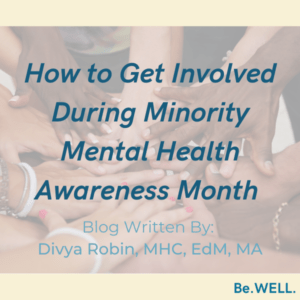“I was feeling suffocated… I was working and sleeping in the one room all the time.”
“I’m more anxious than I have ever been.”
“I cannot imagine doing this indefinitely.”
“There are nice benefits… not having a commute, taking a break when you need it.”
“Being judicious with my time has felt empowering.”
“I love this; it is the best.”
It might be hard to believe these sentiments are communicated about the same topic: quarantine as a result of the ongoing pandemic. Whether you’re feeling overwhelmed, frustrated, at peace, or otherwise — you are not alone. Though what keeps people up at night during this time varies, whether in a committed relationship, single, or somewhere in between: relationships are a commonality for all of us.
To explore relationships during quarantine, we interviewed two couples and a single 30 year old to understand their take on what is working and what isn’t — we’ll unpack working from home, communication, feelings toward the restrictions lifting, and more. After reading, we hope you feel connected to some new people, recognize how not alone you are, and walk away with sage counsel on making the most of this time.
Let’s Meet Them
Julia and Todd live in Brooklyn, NY and have been together over a year. After many years as a school social worker, Julia pursued her MSW and is now a practicing therapist in Midtown and Nomad NYC. Her boyfriend, Todd, runs software teams for an education technology platform; he has been working partially remotely since before the pandemic.
Diana and Jeff live in Hoboken, NY and have been together over four years. Diana is the founder of Be.WELL. Psychotherapy Group, the creator of the BeHER Circle, BeHER Teen Programs and the BeHER Circle Facilitator Training. Jeff is a passionate personal trainer (the kind that will text you to call out a missed session… the kind many of us need).
Elena lived in Pennsylvania while pursuing her Master’s and teaching for the last four years; she moved to Boston, MA just 6 months before the pandemic and currently teaches Spanish at a private high school just outside the city.
Working From Home
Julia and Todd live in a two bedroom apartment; while Todd had acclimated to remote working before the pandemic, Julia began to work from home at the onset of COVID. Because of the confidentiality required with Julia’s clients, she sequestered herself in the bedroom for work: “I was working and sleeping in the one room all the time. There was no place to go to decompress or for solo time. Having solo space just didn’t exist here”.
Diana and Jeff are also both remotely working right now with starkly different takes on the experience. Diana’s perspective aligns with Mariel’s: “I can’t wait to go back to the office” — whereas Jeff has no complaints, “I actually like it a lot… I can wake up at 6:55 and at 7 am I’m training.” Jeff marvels at how quarantine has shown him he can train from anywhere; he intends to primarily keep working remotely moving forward.
For Elena, the decision to go fully remote was made by the school during their Spring break, which resulted in a quick transition for faculty, staff, and students alike. Elena took the opportunity to travel to her parents house on the beach (an hour north) to escape the city during COVID. She quarantined for two weeks in a second family home nearby that is vacant, then moved into her folks’ place.
There was a consistent theme across both couples and Elena. As she says, the two worlds of work and home “…have collided. Everything from the commute to having a different space to be in (whether my classroom or office) helps keep those two worlds separate — which I like and now miss.” How can you try to manage the conflation of work and home?
Separating Work from Home
Diana, Julia, and Elena all primarily work in their bedrooms; they echo a similar challenge. As Elena explains, “it really messes with me having my bed so close to my desk… I find that I need to step away from my desk often”. Elena is able to separate her work from home by setting up different spaces — one designated for work and others associated with leisure. Because of the confidentiality in Diana and Julia’s field, they aren’t able to work in any common space.
However, Diana has a tried and true cue and emotional trigger to separate her work time from her personal time, “It really has to do with the sound machine — if it’s on, that means I’m working. I’ve been doing the same thing for almost 20 years”. At Be.WELL., we recommend setting your own trigger that separates home from work — whether it be tucking away your laptop, sequestering yourself to one working space distinct from others, or removing work email from your personal phone to prevent the ‘continual scroll’.
In addition to creating space within the home, Jeff shares how important it is to leave the house — to find things to do, run errands, and keep active. Julia and Todd prioritize taking regular walks, getting outside, going for runs, and riding bikes. Elena echoes this as well, as she also sets aside an hour a day to do something physical. The endorphin release of exercise is important, staying active is integral to prioritizing your health and wellness.
Communication in Quarantine
While it isn’t exercise in its most traditional form, communication is a muscle that needs to be flexed often. It can be a challenge for couples during the best of times — in quarantine, communication is imperative.
For Julia and Todd, they recognize how they each share a responsibility in this regard: it’s important for each individual to be self-aware of their own needs and goals — to actively communicate these to their partner to prevent surprises. Todd shares: “the sooner you can communicate what you need, the types of things that are good for you, the better”. Similarly, he adds: “recognize when the other person is about to express something they need”. This allows you each the opportunity to actively listen and engage with one another. Diana’s counsel here aligns: “don’t get frustrated with little shit. I know that my frustration isn’t him; it’s me. Be mindful of what you bring into the relationship… your partner shouldn’t have to try to bend around that”.
The themes of self-awareness, ownership of your own emotions and behavior, and openness are consistent across healthy communication. As Julia explains, “I feel like we’re really strong communicators and communicate really openly about everything”. What made their communication a bit more difficult in COVID? They had a roommate for the first few months. They shared the impact of living with another person during this time: “it felt like there was a level of freedom that didn’t get to exist anymore because we’re operating in a space with someone else, trying to be mindful of this additional person”. Let’s not forget the role of paper thin walls, plus how having difficult conversations in the bedroom space can change the dynamic. They solved this challenge by taking private walks together and prioritizing finding the space they need to talk through any challenges.
Finally, an important approach to communication among partners involves intent. Julia explains the value of “knowing that my partner has my best interest; he is coming from a place of respect. We’ve certainly had moments that we’ve both gotten frustrated or angry but we’re able to understand where that is coming from: the lack of control, the loss of plans, the loss of work…. there are so many factors”. The key is remembering that it’s such a trying time for each partner in their own way. In turn, providing space and a secure space for one another is invaluable. Jeff keeps this clear and simple — his guiding principle here: “respect each others’ space and boundaries”. Mariel echoes the importance of, “holding a lot of compassion and patience; realize there is a lot of shit going on right now.”
Dating in Quarantine
Communication transcends across relationships — romantic partnerships, friendships, family and dating.
Let’s zoom in on Elena here: she is 30, stunning, and single. She moved to Boston this past Fall and, as she settled into her first 6 months, COVID hit. She put a pause on dating during March, “I don’t feel I have the same amount of freedom (temporarily back with my parents); it feels strange to be going out when they’re around.” When pressed about her openness to date back in the city, she shared the difficulty here as well: restaurants aren’t open, Boston is a two hour round trip from the beach, and the logistics are challenging… securing these pieces for a Hinge date is — candidly — a tough sell.
However, recognizing the longevity of quarantine (and the desire for a partner), she slowly hopped back on the apps over the next couple of months: “I was not sure how I wanted to approach it. Once I started talking to people, I realized I could have given more thought to what I was hoping to do with dating during the quarantine. Some guys were interested in meeting up and going for coffee or a walk. Earlier in the game, that made me nervous.”
The complexity with in-person dating in quarantine is layered. As Elena explains, “I just don’t know if we should be doing this. It’s hard to respect distance and boundaries with complete strangers.” This echoes among many whom we spoke with — it’s one thing to tell your friends or parents you aren’t hugging, yet somehow can feel more awkward with a date.
So what about online virtual dating? “Hinge, the app itself, at some point started doing notifications for online dates. I found that from the people I talked to… not many of them suggested that. It’s exhausting in a different way”.
Be.WELL.’s take on COVID dating? Honoring your own level of comfort and being transparent about the boundaries you intend to set (which, coincidentally, is a great practice for healthy relationships overall).
Finding Good in the Bad
Yet another commonality among our interviewees: wishing for more space, freedom from feeling cooped up, and missing the commute in which they could soak up the energy of the city, enjoy the outdoors, and clear their head.
Silver lining… there were also trends among them regarding what works to brighten days, such as reveling in the little moments of joy. As Julia explains, “the making of coffee in the morning, making lunch together, having someone who can take care of you in the middle of the day, those bursts of sweet connection…” Diana adds the importance of being playful with each other and having fun with it. She’ll ask Jeff, “what are you doing in the waiting room?” or he’ll let her know he is “heading out to the gym” which might mean migrating to the loft. Physical touch is important too — daily hugs (the kind where you’re heart to heart and fully embraced) go a long way toward feeling connected.
Navigating What is Next
Finding what works for you and your own thresholds of tolerance and safety are integral to navigating the pandemic. For example, Julia and Todd share that, for them, it’s much more important to get a run or bike ride in (while wearing a mask) than to be able to say with 100% certainty that there is no chance they’ve encountered anyone with the virus. In Todd’s words, “we have it dialed in for us… we’re trying to engage with the world as much as we can with fact-based, science-based boundaries. We’re trying to make something of this life that we can enjoy.”
Diana’s advice here is hopeful: this isn’t forever… be kind to each other.
Given the state of the world, it might be easy to lose sight of this situation’s impermanence. However, at our psychotherapy office in Manhattan our therapists are here to help prioritize your health and wellness so you can emerge from this stronger. If you’d like to align with someone who can work with you on prioritizing balance, your well-being, your relationship, and more — call or text 646-863-0101 or schedule a consultation.




